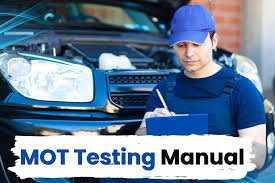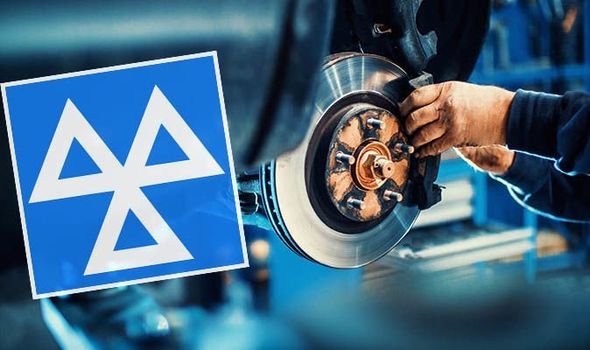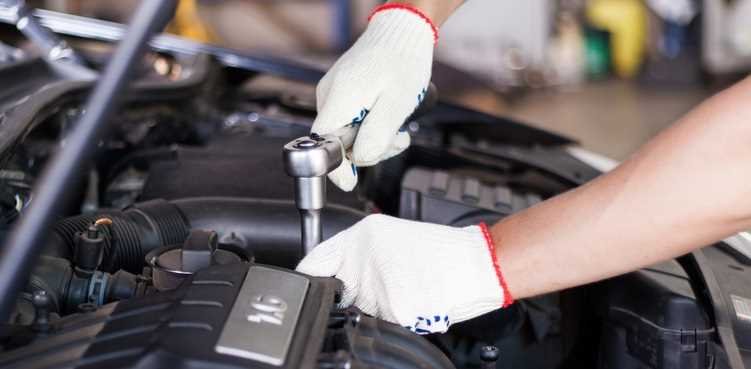Why Preparing for MOT Matters
Every year, millions of drivers in the UK book their MOT test — but not everyone passes on the first try. Getting your MOT done shouldn’t be stressful or expensive. With the right preparation, you can avoid unexpected failures, save money, and keep your vehicle road-legal.
The Get MOT Done mindset is all about being proactive. Instead of waiting for the test day and hoping for the best, a bit of smart preparation can go a long way. Whether you drive a family car, taxi, or work van, understanding how MOT testing works can help you pass with confidence.
In this guide, we’ll cover everything you need to know to prepare your vehicle for MOT testing, what to check before the appointment, and how to avoid common reasons for MOT failure.
What Does an MOT Test Involve?
An MOT test checks whether your vehicle meets the minimum safety and environmental standards set by Driver and Vehicle Standards Agency (DVSA).
Here’s what an MOT inspector typically examines:
-
🔧 Brakes and steering
-
🚘 Tyres and wheels
-
🧠 Suspension
-
💡 Lights and indicators
-
🪟 Windscreen, wipers, and mirrors
-
📢 Horn and seatbelts
-
🌿 Emissions and exhaust system
-
🪪 Registration plates and VIN
-
🪑 General vehicle structure and bodywork
If your car passes, you’ll receive an MOT certificate. If it fails, you must fix the issues and retest.
When Should You Book Your MOT Test?
You can book your MOT up to one month before your current MOT expires and still keep the same renewal date. This gives you time to fix any problems and get MOT done without rushing.
📅 Top Tip:
Never wait until the last day to book your MOT. Garages get busy, and if your car fails, you might not have enough time to repair it before the MOT expires.
Step-by-Step Guide to Prepare Your Vehicle for MOT Testing
Step 1: Check Your Lights and Indicators
Faulty or blown bulbs are one of the most common reasons for MOT failure. Make sure:
-
Headlights, brake lights, and indicators work properly.
-
Number plate lights are functional.
-
Lights are clean and not cracked.
✅ Pro Tip: Turn on your lights and walk around the car to check them yourself or ask someone to help.
Step 2: Inspect Tyres and Tread Depth
Tyres must have at least 1.6mm of tread depth across the central three-quarters of the tyre. Uneven wear or bald tyres can lead to an immediate fail.
Checklist:
-
Use a tread depth gauge or a 20p coin test.
-
Check tyre pressure and look for cuts or bulges.
-
Make sure all tyres are the same size and type.
🚨 Driving with illegal tyres can result in fines and penalty points.
Step 3: Clean Your Car – Inside and Out
A clean car shows that you take care of it — and it also helps the MOT tester do their job properly. Make sure to:
-
Remove clutter from the seats and boot.
-
Clean your windows, mirrors, and number plates.
-
Ensure seatbelts are accessible and not tangled.
💡 A dirty or cluttered car can even cause an MOT refusal in some cases.
Step 4: Check the Brakes
Brakes are one of the most critical safety checks during MOT. Look out for:
-
Spongy or soft brake pedals
-
Grinding noises when braking
-
Pulling to one side
If you notice any of these issues, get your brakes checked by a professional before booking the test.
Step 5: Test Your Horn
It might seem minor, but a faulty horn can cause an MOT failure. Press your horn to ensure it works and is loud enough to be heard clearly.
Step 6: Windscreen, Wipers, and Washer Fluid
Your windscreen must be free of major cracks or chips, especially in the driver’s line of sight.
Checklist:
-
Wipers should clean effectively and not leave streaks.
-
Washer fluid reservoir should be full.
-
Windscreen should be clean and clear.
🧽 Even an empty washer fluid tank can cause a fail.
Step 7: Check Mirrors and Seats
Mirrors should be secure and give a clear view of the road. Seats should be firmly fixed, and seatbelts must work correctly.
-
Adjust mirrors before the test.
-
Tug seatbelts to check if they lock properly.
-
Ensure headrests are in place.
Step 8: Examine the Exhaust and Emissions
MOT testers check emissions to ensure your car meets environmental standards.
-
Start your car and listen for unusual noises.
-
Look for visible smoke from the exhaust.
-
Make sure there are no leaks.
Diesel vehicles must also pass stricter smoke tests, so regular servicing is essential.
Step 9: Check Registration Plates and VIN
-
Number plates must be clean, legal, and visible.
-
VIN (Vehicle Identification Number) must be clearly displayed.
-
Plates should not be cracked or faded.
Step 10: Top Up All Fluids
Before you get MOT done, check these:
-
Engine oil
-
Brake fluid
-
Screenwash
-
Coolant
Low fluid levels may not fail your MOT directly but can cause advisories or complications.
Common Reasons Cars Fail the MOT Test
Knowing what typically causes failures can help you avoid them:
| Common Failures | How to Prevent Them |
|---|---|
| Faulty lights | Check bulbs before the test |
| Worn tyres | Maintain legal tread depth |
| Wiper issues | Replace worn or damaged wipers |
| Brake faults | Regular maintenance |
| Emissions problems | Service the car, replace air filters |
| Dirty number plates | Clean regularly |
By checking these in advance, you can increase your chances of a first-time MOT pass.
What to Bring to the MOT Test
When you arrive for your MOT appointment, bring:
-
🔑 Your vehicle registration document (V5C logbook)
-
🧾 Previous MOT certificates (optional but useful)
-
🪪 Proof of insurance (sometimes required)
What Happens During the MOT Test
The MOT test usually takes 45 minutes to an hour. During the test, the examiner will:
-
Visually inspect your car.
-
Test lights, brakes, suspension, tyres, and emissions.
-
Record any advisories or failures.
-
Issue a certificate or a failure report.
If your car passes, you’ll receive your MOT certificate immediately. If it fails, the garage will explain what needs to be fixed.
What to Do If Your Car Fails the MOT
If your car fails, don’t panic. You can:
-
Get the issues repaired at the same garage (often cheaper).
-
Take the failure report to another garage for a second opinion.
-
Retest the car within 10 working days.
👉 If the faults are minor, you may be allowed to drive away and return later.
The Benefits of Preparing Before the Test
-
✅ Higher chance of passing first time
-
💰 Save money on retests and repairs
-
⏳ Less stress on test day
-
🚘 Keep your car safer and more reliable
-
🌿 Better for the environment
How Early Can I Get MOT Done?
You can get your MOT test done up to 1 month (minus 1 day) before the expiry date without losing time on your new MOT. This is the smart way to ensure you’re always legal to drive.
Example:
-
Your MOT expires on 20 June.
-
You can get MOT done as early as 21 May.
-
The new certificate will still be valid until 20 June next year.
Why Regular Maintenance Helps Pass the MOT
A well-maintained car is less likely to fail an MOT. Regular servicing helps detect and fix issues before they turn into MOT failures.
-
Service your car annually or every 10,000 miles.
-
Keep a maintenance log.
-
Don’t ignore dashboard warning lights.
MOT Exemptions – Do They Apply to You?
Some vehicles don’t need an MOT test, such as:
-
Classic cars over 40 years old that haven’t been substantially modified.
-
Electric goods vehicles registered before 1960.
-
Certain tractors and agricultural vehicles.
But for most drivers, MOT is mandatory — so preparing is key.
MOT Retests and Partial Retests
If your car fails, you may qualify for a free partial retest if:
-
You leave the vehicle at the same test centre.
-
You return within 10 working days.
This can save you time and money — another reason to prepare properly.
Booking Your MOT Online
Many garages now offer online booking systems, making it easier than ever to get MOT done without waiting in queues.
Benefits of booking online:
-
Instant confirmation of your slot
-
Choose the time that suits you
-
Receive email or SMS reminders
-
No paperwork needed
How Much Does an MOT Cost in the UK?
The maximum fee set by the government is:
-
£54.85 for a car
-
£29.65 for a motorcycle
However, many test centres offer discounted rates or bundle MOT with servicing.
Tips to Make MOT Day Smooth
-
Arrive early at the test centre.
-
Bring all required documents.
-
Make sure your car is clean and ready.
-
Stay calm — preparation pays off.
Get MOT Done with Confidence
Getting your MOT done doesn’t have to be stressful. With a little preparation and awareness, you can pass the test the first time, avoid unnecessary costs, and keep your vehicle safe and legal.
Whether you’re a first-time car owner or a seasoned driver, following the steps in this guide ensures a smooth MOT experience. Remember: prevention is cheaper than repair.
👉 Final Tip: Set a reminder for your MOT date, prepare your car a week in advance, and enjoy peace of mind on the road.
FAQs – Get MOT Done
Q1: How early can I book my MOT?
✅ Up to 1 month before your expiry date.
Q2: What happens if I drive without an MOT?
🚨 You can be fined up to £1,000 and risk insurance invalidation.
Q3: How long does an MOT test take?
⏱️ Usually 45–60 minutes.
Q4: Do I need to bring my logbook?
🪪 It’s not required but can be helpful.
Q5: Can I do an MOT and service together?
✅ Yes, and many garages offer discounts for this.
DVLA MOT Check: How to Use the Official DVLA Service to Check MOT History
My MOT Check: How to Check Your MOT History Using Your Registration Number



